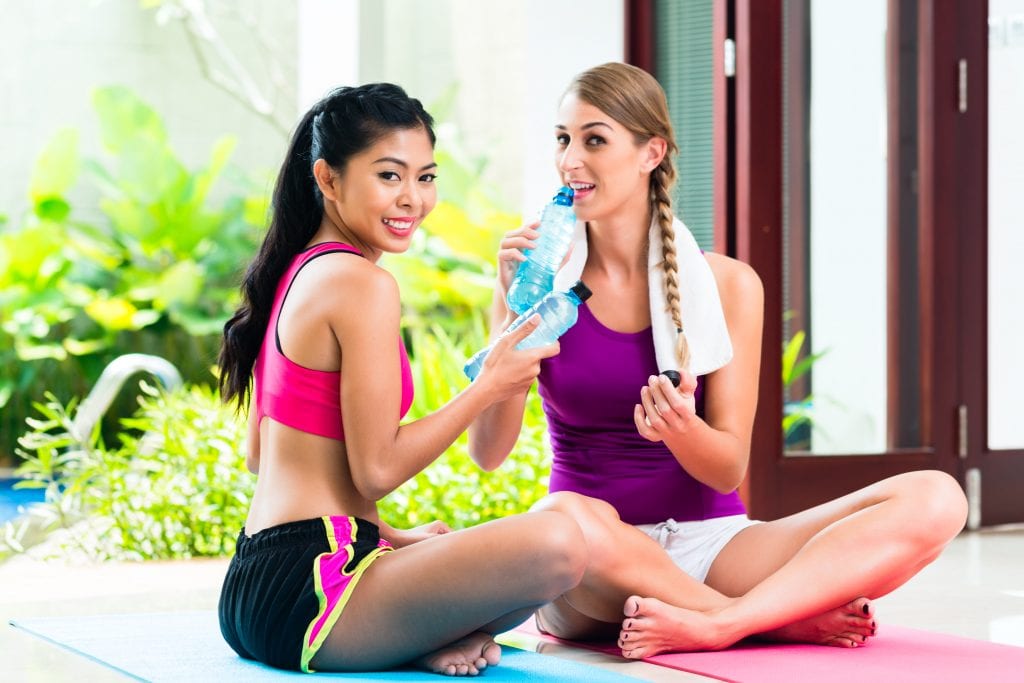By Dinah Seng

While the question of retaining youth remains the same all over the world, the East and West have vastly different approaches to it! Find out where they really stand and what you can learn from both sides!
If there’s one thing that women all around the world can agree on, it’s that the effects of aging can really suck sometimes. We spend tonnes of money on a plethora of beauty products to fight off those darn wrinkles. But on the plus side, at least the quality of our pay cheques tend to increase as we age.
But don’t worry, you’re not alone! Since the beginning of time, mankind has been on the search for anti-aging strategies. Although the question of how to stop aging may be the same worldwide, the answers are vastly different.
Breaking it down
szefei/shutterstock.com
Women in Asia, highly influenced by the South Korean culture, tend to adopt a more preventative approach towards aging. The fight against age starts from young to ensure luminescent looking skin for as long as possible. As such, Asian skincare routine is known to be highly comprehensive, involving multiple steps and products to target different facial areas. There is the infamous 12-step Korean skincare routine that consists of serums, essences, sheet masks, and even neck creams!
In the West, the general sentiment is to switch to skincare products with intensive anti-aging regimes after a certain age or when symptoms start to show. There is lesser emphasis on skincare given that beauty standards are linked to the latest makeup trends. Up till 30, most Western girls adopt a fuss-free three-step skin care routine: Cleanse, tone and moisturise.
Anti-Aging Products
Skincare products from both sides reflect their respective cultures! While Western products are known to be fuss-free and contain ‘fix-it’ properties, ingredients in Asian products tend to nurture the skin instead.
Skincare products sold in Western markets tend to have 3-in-1 properties, targeting problems like dehydration, dullness, wrinkles, and laugh lines all at once. Meanwhile, the Asian women generally choose products that have more specific repair properties.
Both sides are effective, and ideally, you want to mix up your approach depending on your situation. Here’s a general overview of skincare characteristics of the East and the West:
| East | West |
| Caters to many skin types: Acne Prone, Big Pores, Sensitive, and moreProducts tend to have a “skin nurturing” functionalityInnovative products including snail serums, hydrogel masks, bee venom, and moreMany different textures: Gels, creams, serumsKnown for their whitening, sun protection products | Caters mainly to 3 skin types: Oily, Dry, CombinationProducts tend to have a “fix it” functionalityKnown for their eye products including wrinkle creams, dark eye circles, and moreProducts often have 3-in-1 propertiesSolutions tend to be more straightforward and convenient |
Customising your anti-aging strategy

goodluz/shutterstock.com
We have delved into the different aging perspectives and approaches of the East and West. Now, how do we get the best of both worlds?
- Understand how your skin ages
Women of different ethnicity and geographies age differently. For instance, a study shows that Caucasian women age on average 10 years earlier than African American women.
In their 20s, women from both the East and the West are concerned with skin dryness. But by their 30s, Asian women shift their focus to skin unevenness while Caucasian women are more particular about wrinkle prevention.
As they age, Asian women face skin problems such as hyperpigmentation and the yellowing of the skin. Their less prominent facial structure also highlights sagging, wrinkles and pores! Western women, on the other hand, need not worry too much except for wrinkles and laugh lines. Their sculpted facial features masks signs of aging better!
With these in mind, select products that are targeted to your skin aging needs. For Asian women, a multi-purpose night cream from an established American or European brand may not be cut out for your skin’s needs. Meanwhile, a product tailored for the Asian skin may be more suitable.
- Know the niche areas
Since Asian women suffer from pigmentation issues, lightening and brightening products from the East are bound to have more variety or the most innovative formulas. Likewise, wrinkle creams from Western brands may be more effective!
However, we must note that our skin is different and thus certain formulas are unsuitable. Asian skin has more sebaceous glands (which secretes oily and waxy matter) and is oilier than Western skin. As a result, Western formulated anti-aging creams can be too intense for our skin and end up aggravating the sebaceous glands.
- You are what you eat
Despite the different approaches, women in both the East and the West realise the importance of tackling aging from within. The age-old adage “you are what you eat” holds true across cultures.
Supplements are greatly encouraged by both Eastern and Western cultures as a way to replenish lost nutrients and repair the skin’s dermal layer. Products like IMEDEEN Time Perfection help keep aging at bay for more youthful-looking skin. It’s a core part of the beauty routine of 42-year-old Singapore-based healthcare administrator Janiz Goh for maintaining her youthful looks. On the other end of the spectrum, Hollywood actress Jessica Biel, age 34, also uses the product to retain her youthful glow.
Cleansing diets and healthy eating have become increasingly popular over the years. Detox options like these are also great to have for a well-rounded lifestyle, and delicious too! If you’re looking for something to combat those nasty wrinkles directly, we have a few tips for you in this article!
Now that you know the difference in anti-aging approaches, time to buffer up your personal routine with tips from the other side!




